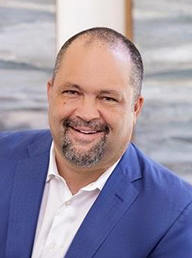
By Ben Jealous
Contamination from lead, arsenic, and the other toxins in Tar Creek in northeastern Oklahoma stole the potential of many children of the Quapaw Nation. As a parent, I can only imagine the anguish and the anger. As a lifelong activist for civil and human rights and the environment, I deeply admire the resilience of the Quapaw and the many Indigenous communities with similar stories.
The Tar Creek Superfund site is the first such site to have its clean-up efforts led by an Indigenous tribe. It sits in what was once the Tri-State Mining District, which supplied the lead and zinc for more than 75 percent of the American bullets and shells used in World Wars I and II.
Although all mining had been abandoned by the early 1970s, hundreds of mines and boreholes were left open. When water filled the holes, it brought toxic heavy metals to the surface. That contaminated the creek, killed wildlife, and sickened the people who had once known the creek as a source of water and a gathering place. In 1979, the creek turned bright orange from the iron in the acid mine water reaching the surface. It was a major sign of the environmental damage that had been done and continued to persist.
The mining operations also left heaps of waste known as “chat,” containing lead and other toxic heavy metals. More than 16 tons of chat were left behind for every ton of ore extracted. Before people in the area were aware of the dangers posed by this chat, children would ride their bikes over the chat piles. It even made its way into their sandboxes.
As late as the 1990s, testing by the Indian Health Service showed high blood lead levels in 35 percent of Native American children in the area. One study showed area school children had 11 times the state average for elevated blood lead levels.
Rebecca Jim, who is Cherokee, came to work at the local school system in the Tar Creek area in 1978, the year before the creek turned orange. She recounts, “One of my students had been fishing the day before it happened. The next day all the fish were dead. It was a shock to see it ruined.”
Jim was moved to action by the learning disabilities and other impacts of lead poisoning she witnessed. Her advocacy was key in the Environmental Protection Agency (EPA) designating Tar Creek a Superfund site in 1983. Thirty years later, the Quapaw Nation itself would seize the reins in partnering with the EPA to remediate the site.
The efforts overseen by the Quapaw have removed over 7 million tons of mine waste and remediated more than 600 acres of land. That is according to Summer King with the Quapaw Nation Environmental Office. King said, “When the site was slated for remediation, the Quapaw Nation requested to conduct the work. Because of the cultural and historical importance to the Nation, they knew their own people were the best for the job.”
Tar Creek is but one example of Indigenous-led efforts to clean up, stop, or prevent environmental disasters in Oklahoma alone. The Choctaw and Chickasaw Nations are leading opposition to a $3.1 billion hydropower project on Kiamichi River that would siphon billions of gallons of water from a sacred waterway. And local Indigenous activists like Okcate Evita Smith McCommas of the Mvskoke Creek Nation, who chairs the Green County Group of the Sierra Club’s Oklahoma Chapter, are leading the fight to clean up the Arkansas River, which runs through Tulsa.
Cheyenne Skye Branscum, long active with the Sierra Club’s Oklahoma Chapter, now serves as the national organization’s Treasurer and is the first tribal citizen on its board of directors. A Citizen Potawatomi Nation member, Branscum holds a deep responsibility to protect our water systems.
“For my people, the Creator entrusted the Kewk, women, to speak for and protect the Water. Protecting the Water is my sacred duty. The struggles over these waters are not relics of the past. They are the very real battles we are still fighting today. And while our lands and waters are threatened, we remain resilient, because the future of these rivers is the future of our people.”
Indigenous leaders in these fights hold a mirror up to our country and make us confront the nation’s mistreatment of this land’s Native peoples. These communities are powerful messengers in challenging the fossil fuel industry and all the industries that thrive on the destruction of our natural world. In many ways, they are our nation’s conscience.
The Bad River Band of Lake Superior Chippewa’s fight against the aging Line 5 pipeline in the Great Lakes region. The Nez Perce, Lummi, Yurok, and other Tribes’ fight to restore the salmon populations that are so critical to their own way of life as well as orcas and entire ecosystems in the Pacific Northwest. The Gwich’in people’s fight to protect pristine Arctic wilderness from destructive fossil fuel extraction. The Standing Rock, Cheyenne River Lakota, and Rosebud Sioux’s fight against the Dakota Access Pipeline. Those are just a few examples from across the country.
As we celebrate Indigenous Peoples’ Day this week and Native American Heritage Month in November, let us join America’s Indigenous communities in making the protection of waters, lands, and wildlife our sacred duty.


Be the first to comment